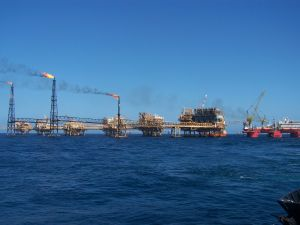In order to be prepared to serve our community in the wake of a San Francisco oil spill, The Brod Law Firm follows oil-related disasters across the nation. Just last week, federal investigators revealed the results of their inquiry into a 2010 incident in Michigan. For the Northern California region, this report is especially notable because it bears several similarities to the explosion that rocked San Bruno during that same year.
 MSNBC is one of several news outlets carrying the Associated Press story about the most expensive onshore oil spill in our country’s history. On July 25, 2010, at approximately 6 P.M., oil began leaking from a 30-inch pipeline in southwestern Michigan. Alarms sounded repeatedly at the control center of Enbridge, Inc., the line’s Canadian operator, but staffers misinterpreted the warning. Overall, the ruptured pipeline dumped approximately 843,000 gallons of heavy crude into the waters of the Kalamazoo River and a tributary creek. About 320 people reported health symptoms that officials tied to oil exposure and the spilled crude fouled over 35 miles of waterways and wetlands. Cleanup costs have surpassed the $800 million marks, more than five times more than the second-costliest onshore spill in U.S. history.
MSNBC is one of several news outlets carrying the Associated Press story about the most expensive onshore oil spill in our country’s history. On July 25, 2010, at approximately 6 P.M., oil began leaking from a 30-inch pipeline in southwestern Michigan. Alarms sounded repeatedly at the control center of Enbridge, Inc., the line’s Canadian operator, but staffers misinterpreted the warning. Overall, the ruptured pipeline dumped approximately 843,000 gallons of heavy crude into the waters of the Kalamazoo River and a tributary creek. About 320 people reported health symptoms that officials tied to oil exposure and the spilled crude fouled over 35 miles of waterways and wetlands. Cleanup costs have surpassed the $800 million marks, more than five times more than the second-costliest onshore spill in U.S. history.
According to the National Transportation Safety Board (“NTSB”), Enbridge failed to respond appropriately to the Michigan catastrophe and also neglected to adequately address structural problems that had been detected years prior. By 2005, five years before the spill, the company knew that the pipeline, located about 95 miles west of Detroit, was cracked and corroded. According to the report, Enbridge did not grasp the significance of the developing cracks and did not appropriately investigate other findings about pipe wall thickness. Enbridge did not perform excavations and visual inspections, actions that NTSB investigators believe could have prevented the rupture. Investigators believe that trapped moisture caused corrosion on the pipeline, leading to cracks that eventually linked together to cause the rupture.
 San Francisco Injury Lawyer Blog
San Francisco Injury Lawyer Blog


 As the Associated Press reported, last Wednesday, BP and a team of plaintiffs’ attorneys presented judge overseeing the BP cases with the formal terms of a proposed settlement for the pending class-action claims. The lawyers are looking for the judge to issue a preliminary approval that would impact BP and a plaintiff-side class composed of more than 100,000 businesses and individuals. There is no indication of how long it will take the judge to reach a ruling. Judge Barbier is expected to hold a formal fairness hearing to evaluate the settlement prior to issuing a final approval.
As the Associated Press reported, last Wednesday, BP and a team of plaintiffs’ attorneys presented judge overseeing the BP cases with the formal terms of a proposed settlement for the pending class-action claims. The lawyers are looking for the judge to issue a preliminary approval that would impact BP and a plaintiff-side class composed of more than 100,000 businesses and individuals. There is no indication of how long it will take the judge to reach a ruling. Judge Barbier is expected to hold a formal fairness hearing to evaluate the settlement prior to issuing a final approval. In November 2011, a drilling accident led to an oil spill at Chevron’s Frade field. The Frade site is a deep water field in the Atlantic Ocean off the coast of Rio de Janeiro. It is estimated that three thousand barrels of crude oil flowed into the water as a result of the Frade incident. According to allegations, the companies involved in the Frade project used faulty equipment, applied excessive drilling pressure, and failed to fulfill requirements aimed at preventing oil spills.
In November 2011, a drilling accident led to an oil spill at Chevron’s Frade field. The Frade site is a deep water field in the Atlantic Ocean off the coast of Rio de Janeiro. It is estimated that three thousand barrels of crude oil flowed into the water as a result of the Frade incident. According to allegations, the companies involved in the Frade project used faulty equipment, applied excessive drilling pressure, and failed to fulfill requirements aimed at preventing oil spills. One business that is booming, both in California and throughout the country, is the oil and gas industry. New drilling and refining techniques have been mastered in recent years which make it possible for the first time to reach certain energy sources that were previously unavailable. These developments may be good news for the local economy, but our
One business that is booming, both in California and throughout the country, is the oil and gas industry. New drilling and refining techniques have been mastered in recent years which make it possible for the first time to reach certain energy sources that were previously unavailable. These developments may be good news for the local economy, but our